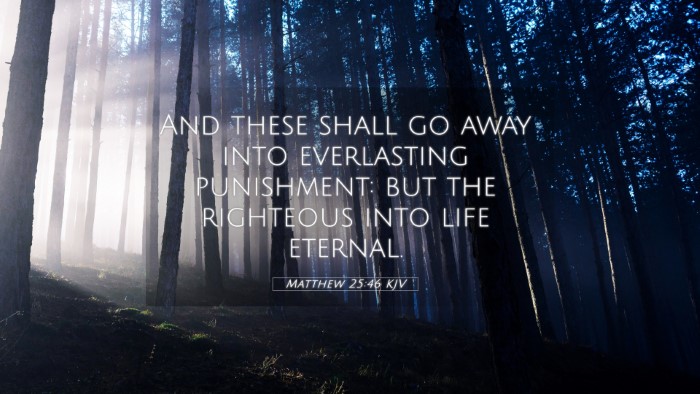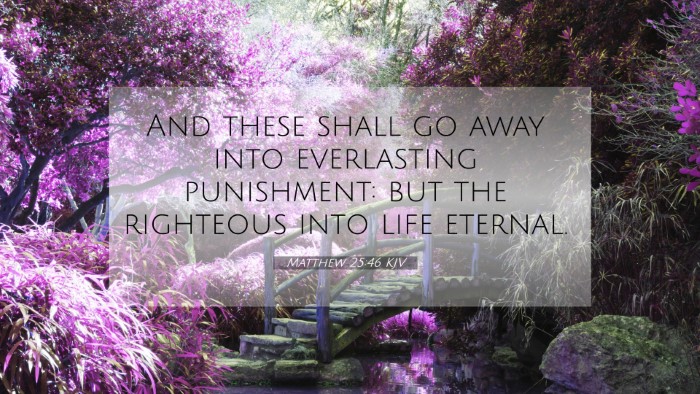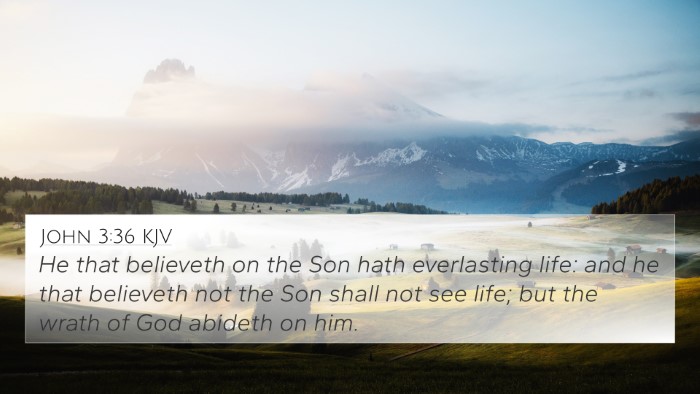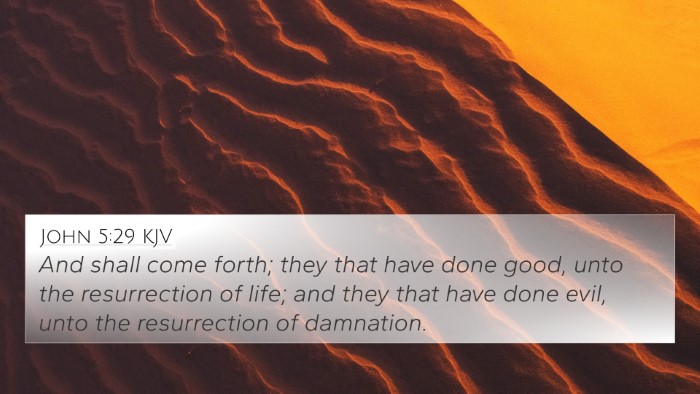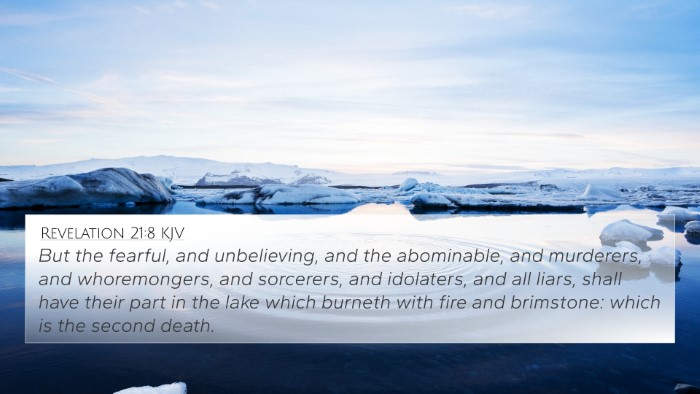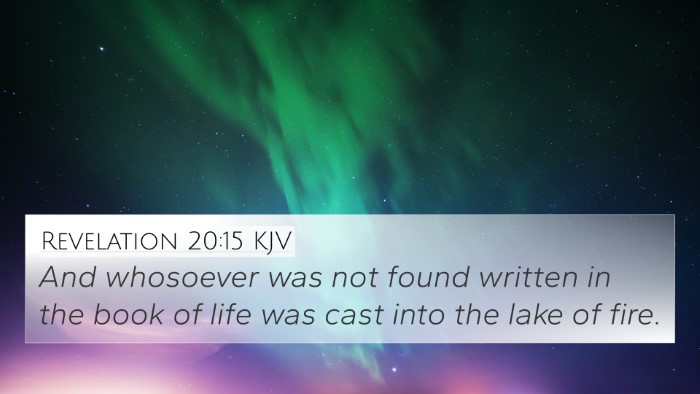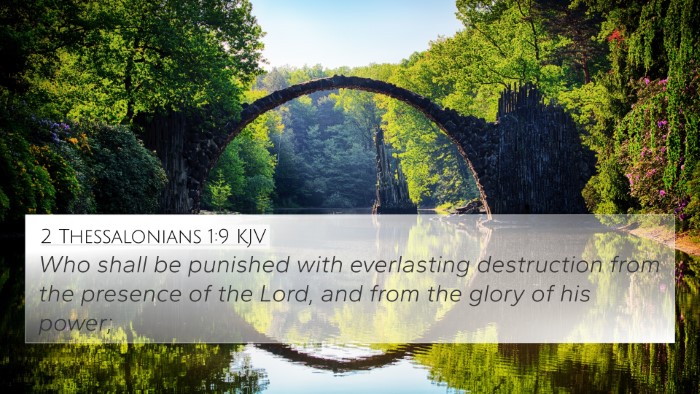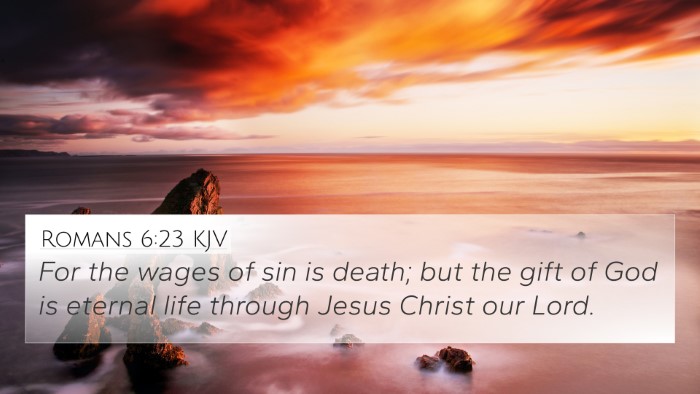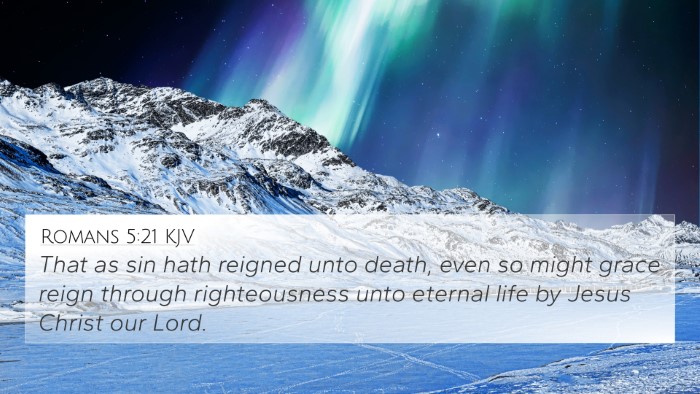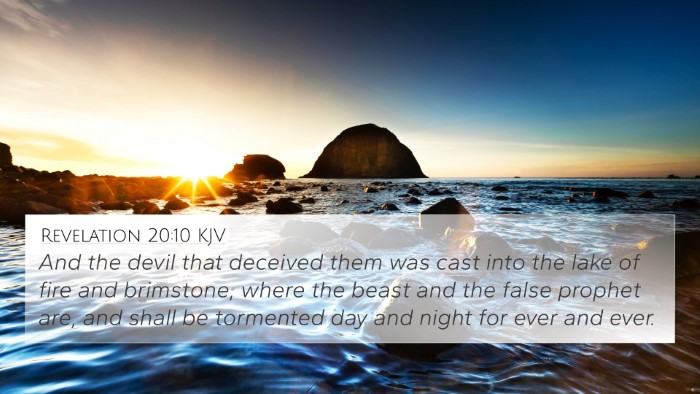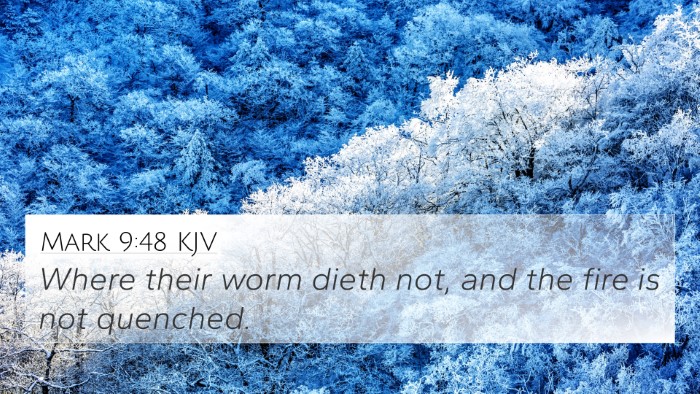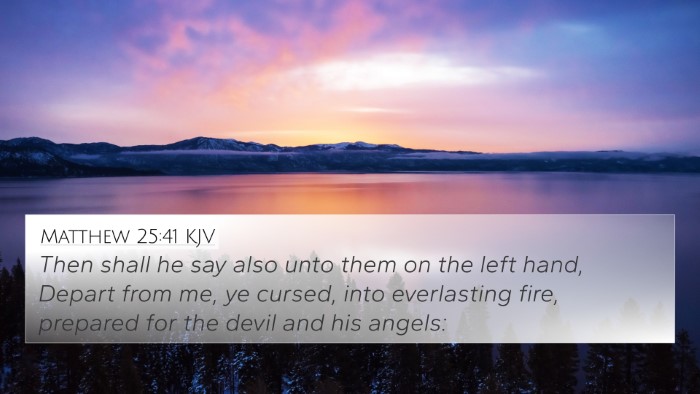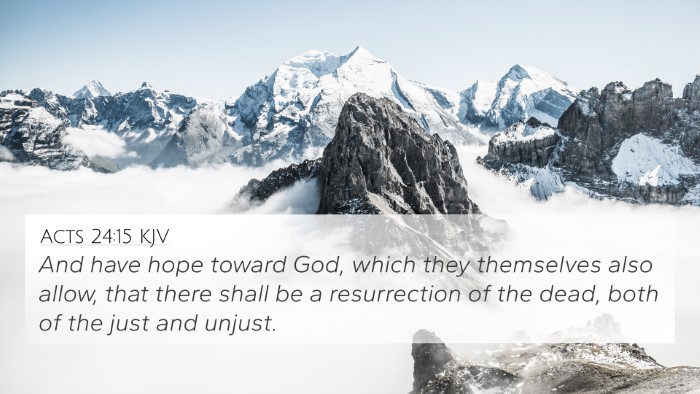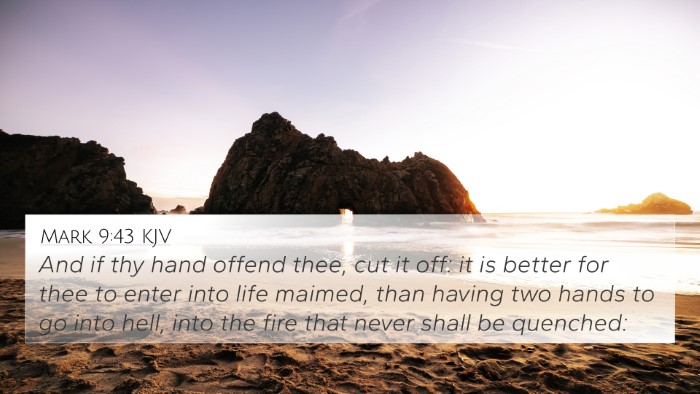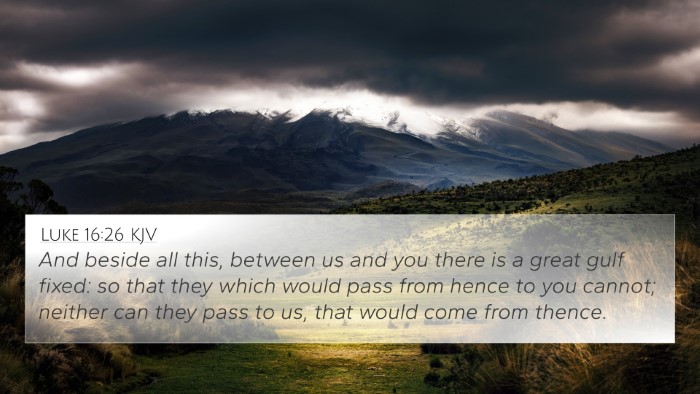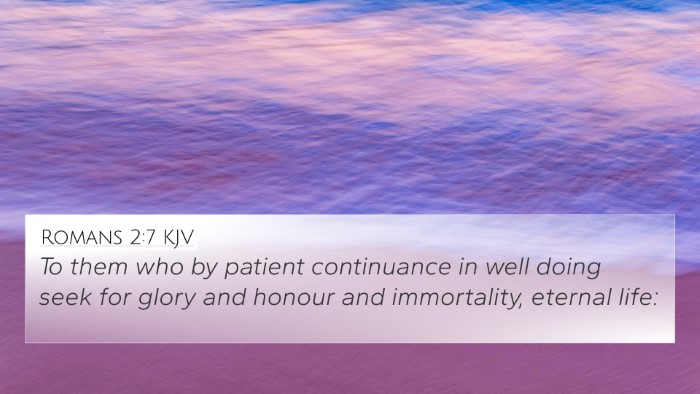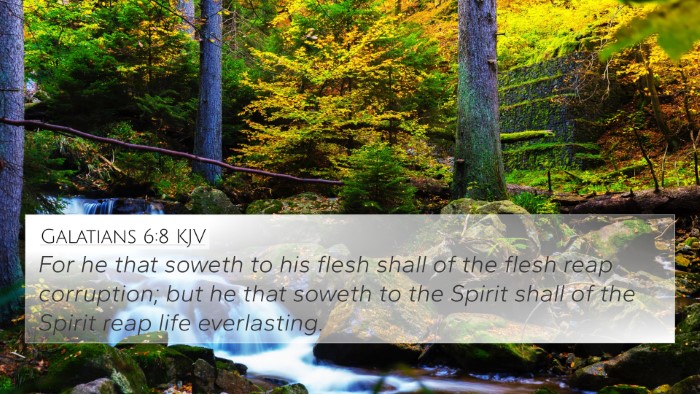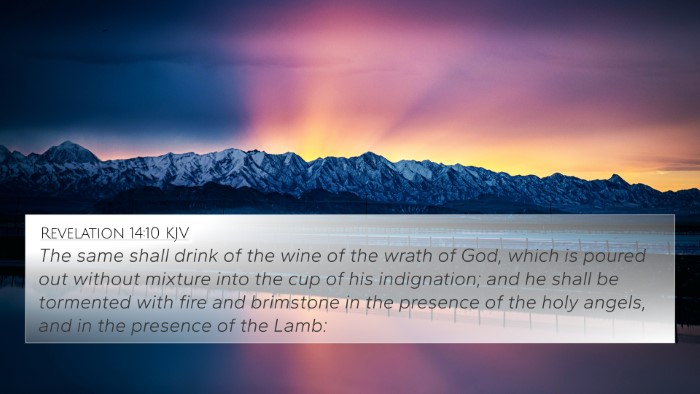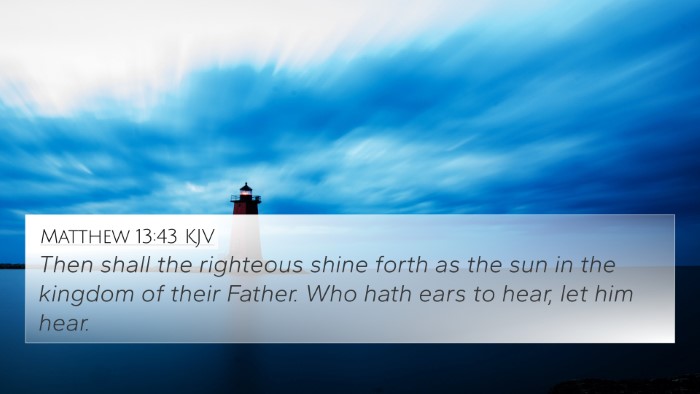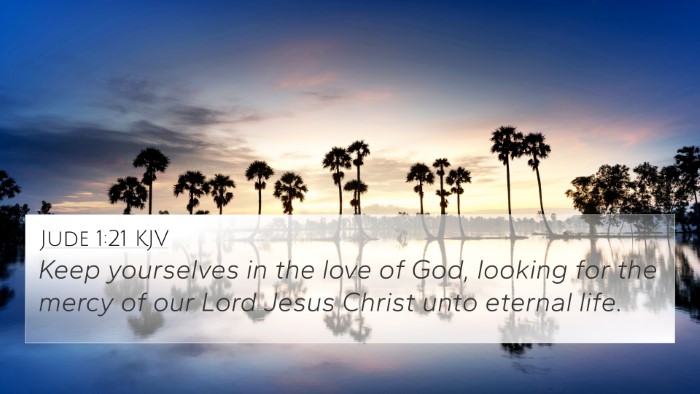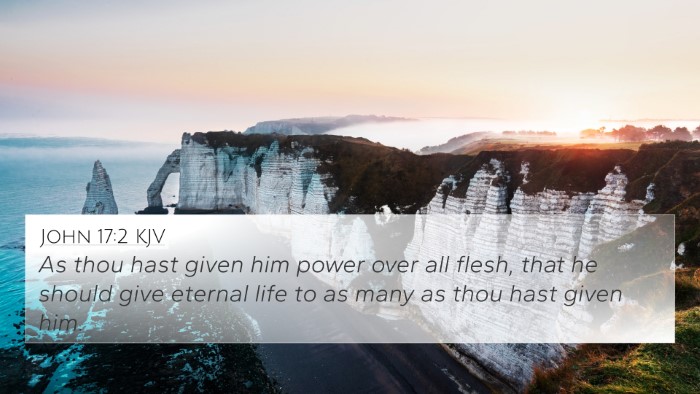Matthew 25:46 states: "And these shall go away into everlasting punishment: but the righteous into life eternal." This verse encapsulates a central theme of judgment and the eternal destinies of humanity, a subject that resonates throughout the Scriptures.
Meaning and Interpretation
This verse serves as a sobering conclusion to the Parable of the Sheep and the Goats, highlighting the ultimate separation between the righteous and the wicked. Below is a synthesized analysis that draws from the public domain commentaries by Matthew Henry, Albert Barnes, and Adam Clarke.
The Nature of Eternal Punishment
Matthew Henry's Commentary: Henry emphasizes the seriousness of the consequences that await those who do not live in accordance with God's will. He suggests that 'everlasting punishment' is a reality that should compel individuals toward righteous living.
Albert Barnes' Notes: Barnes elaborates on the nature of this punishment, asserting that it is both meaningful and deliberate. He views it as a testimony to the justice and holiness of God, affirming that those who have rejected God's offer of salvation must face the repercussions of their choices.
Adam Clarke's Commentary: Clarke discusses the term 'everlasting' as denoting an unending condition. He speculates on the implications for those judged; their eternal separation from God signifies not just punishment, but the absence of His presence and goodness, leading to a profound suffering.
Contrast with the Righteous
Both Henry and Barnes draw a stark contrast between the fate of the wicked and that of the righteous. While the wicked are destined for eternal punishment, the righteous are promised “life eternal.” This promise is significant, indicating a relationship with God that transcends earthly existence.
Key Insights on Righteousness
Henry points out that the righteousness referred to is not based on mere outward actions but a transformed heart that reflects God's love and grace. This heart transformation leads to compassionate acts of service, which ultimately exemplifies true faith.
Cross-References for Deeper Understanding
To fully grasp the implications of Matthew 25:46, one can reference various interconnected Scriptures that explore judgment, righteousness, and eternal life:
- John 5:28-29: "Marvel not at this: for the hour is coming, in the which all that are in the graves shall hear his voice." (Linking judgment and resurrection)
- Mark 9:43: "And if thy hand offend thee, cut it off: it is better for thee to enter into life maimed, than having two hands to go into hell." (Emphasizing the severity of sin and its consequences)
- 2 Thessalonians 1:9: "Who shall be punished with everlasting destruction from the presence of the Lord." (Affirming the eternal separation and punishment for the unrighteous)
- Romans 2:6-8: "Who will repay each person according to what they have done: to those who by persistence in doing good seek glory, honor, and immortality, he will give eternal life." (Highlighting the righteous reward)
- Revelation 20:10: "And the devil that deceived them was cast into the lake of fire and brimstone." (The ultimate destiny for evil)
- Galatians 6:7: "Be not deceived; God is not mocked: for whatsoever a man soweth, that shall he also reap." (Connecting actions to consequences)
- Matthew 13:49-50: "So shall it be at the end of the world: the angels shall come forth, and sever the wicked from among the just." (Clarifying the final separation of the righteous and the wicked)
Conclusion
The essence of Matthew 25:46 speaks powerfully about the realities of eternal life versus eternal punishment. It urges both reflection and action from its readers. Through the insights of notable commentaries and the support of cross-referenced Scripture, individuals can better understand the dire importance of living righteously and the eternal consequences that follow.
Thematic Connections Throughout the Bible
Matthew 25:46 bridges various biblical themes such as grace, judgment, righteousness, and the promise of eternal life. The verse serves as a profound reminder for believers to actively engage in their faith and reflect Christ's love and teachings in their lives. By exploring cross-references, one can delve deeper into these themes and see how interconnected biblical teachings guide us toward understanding God's plan for humanity.

